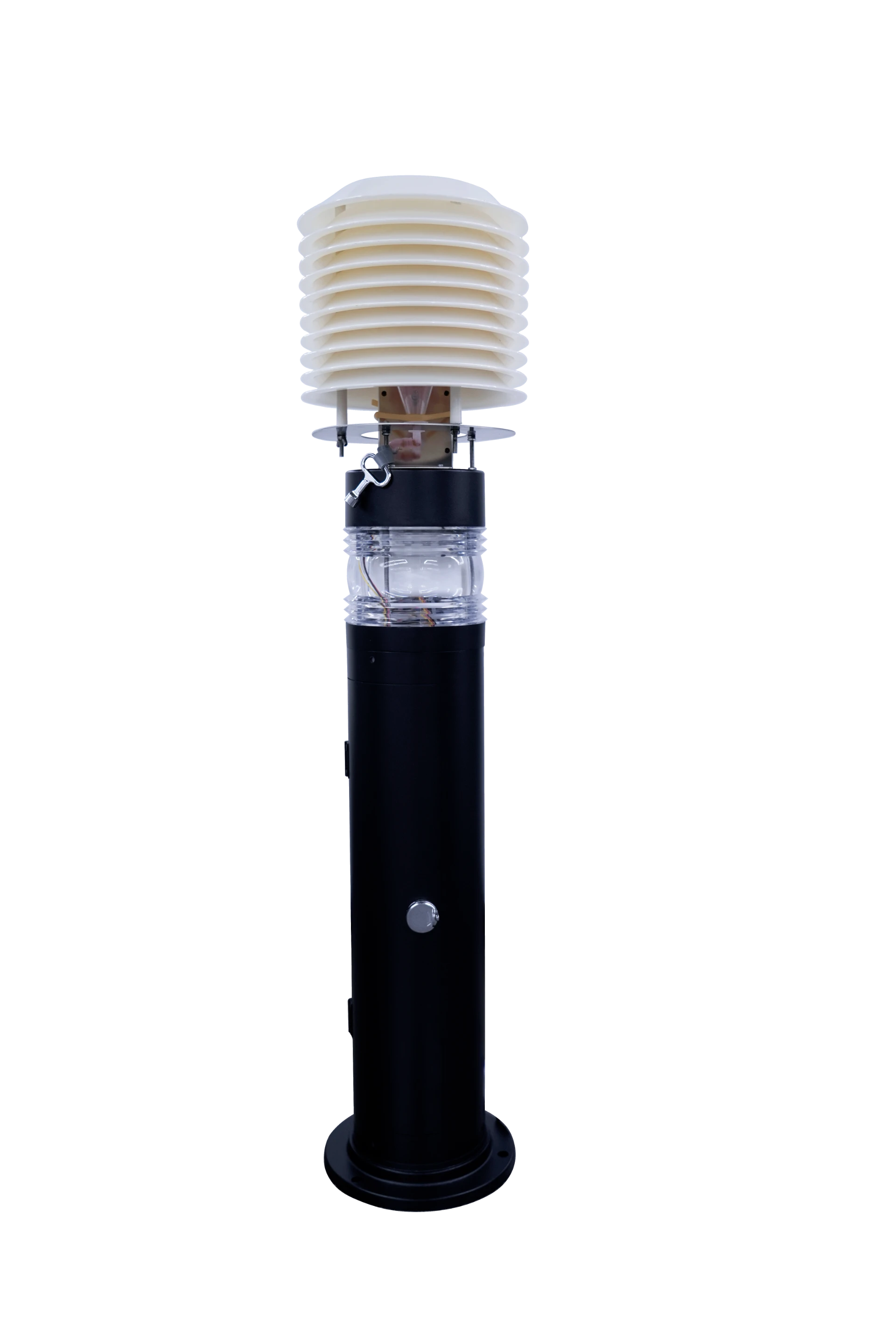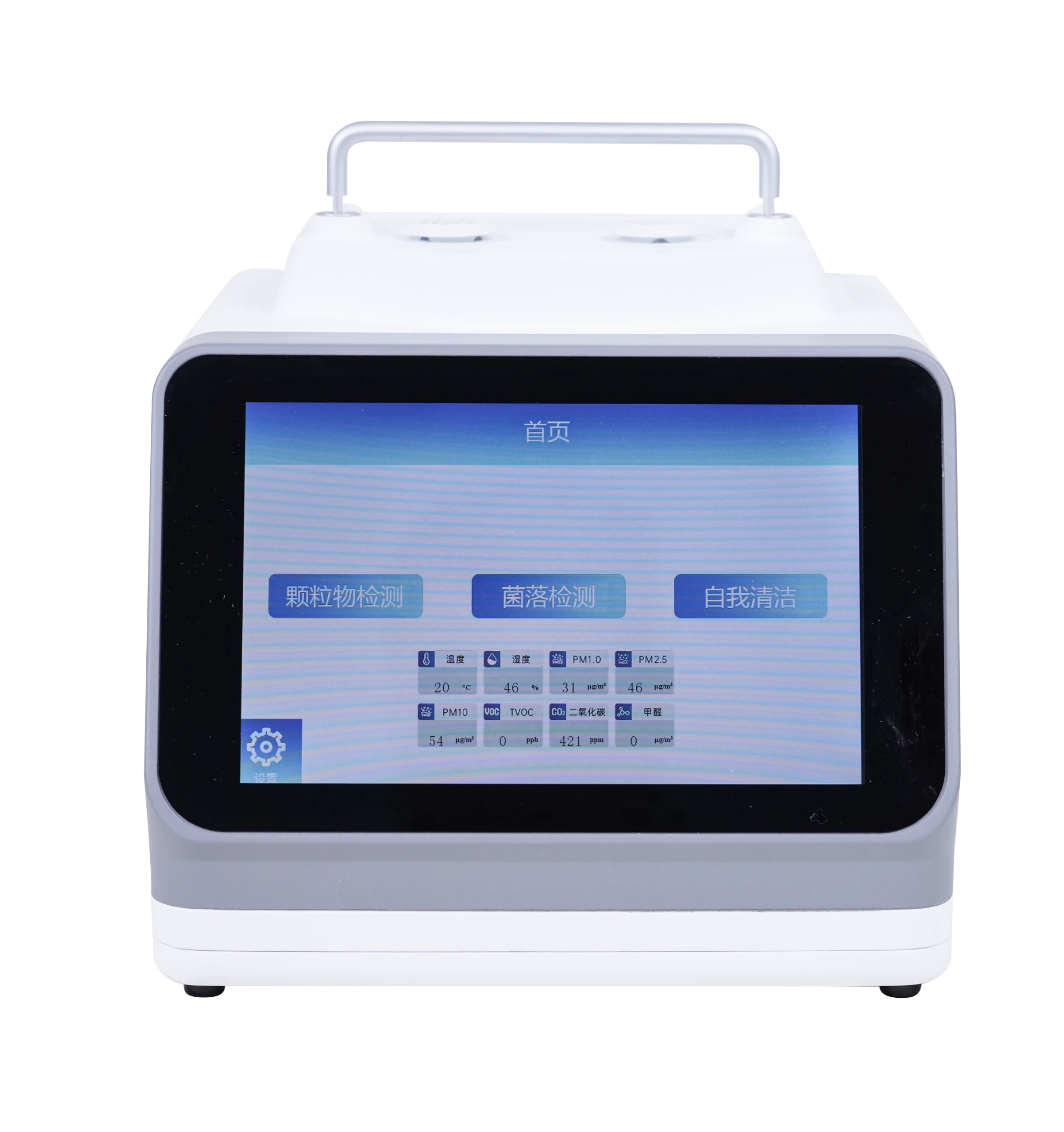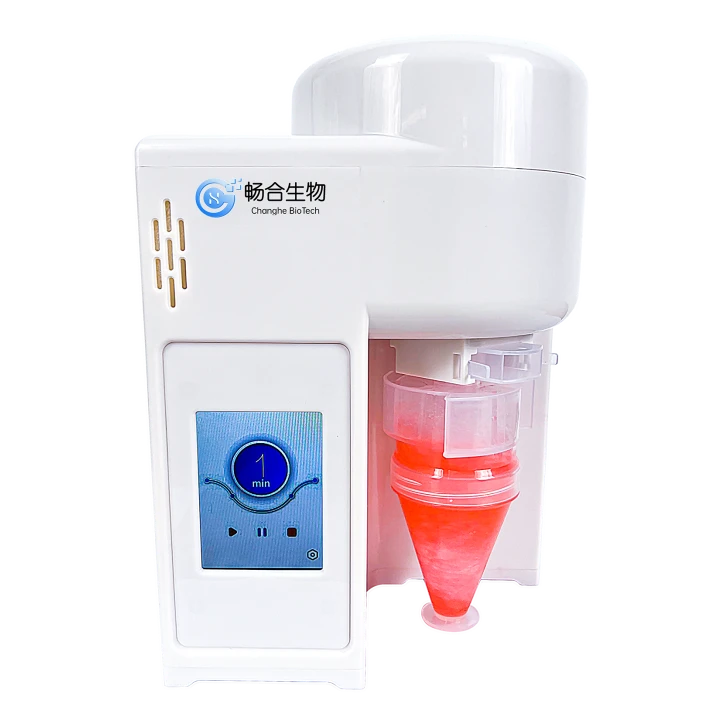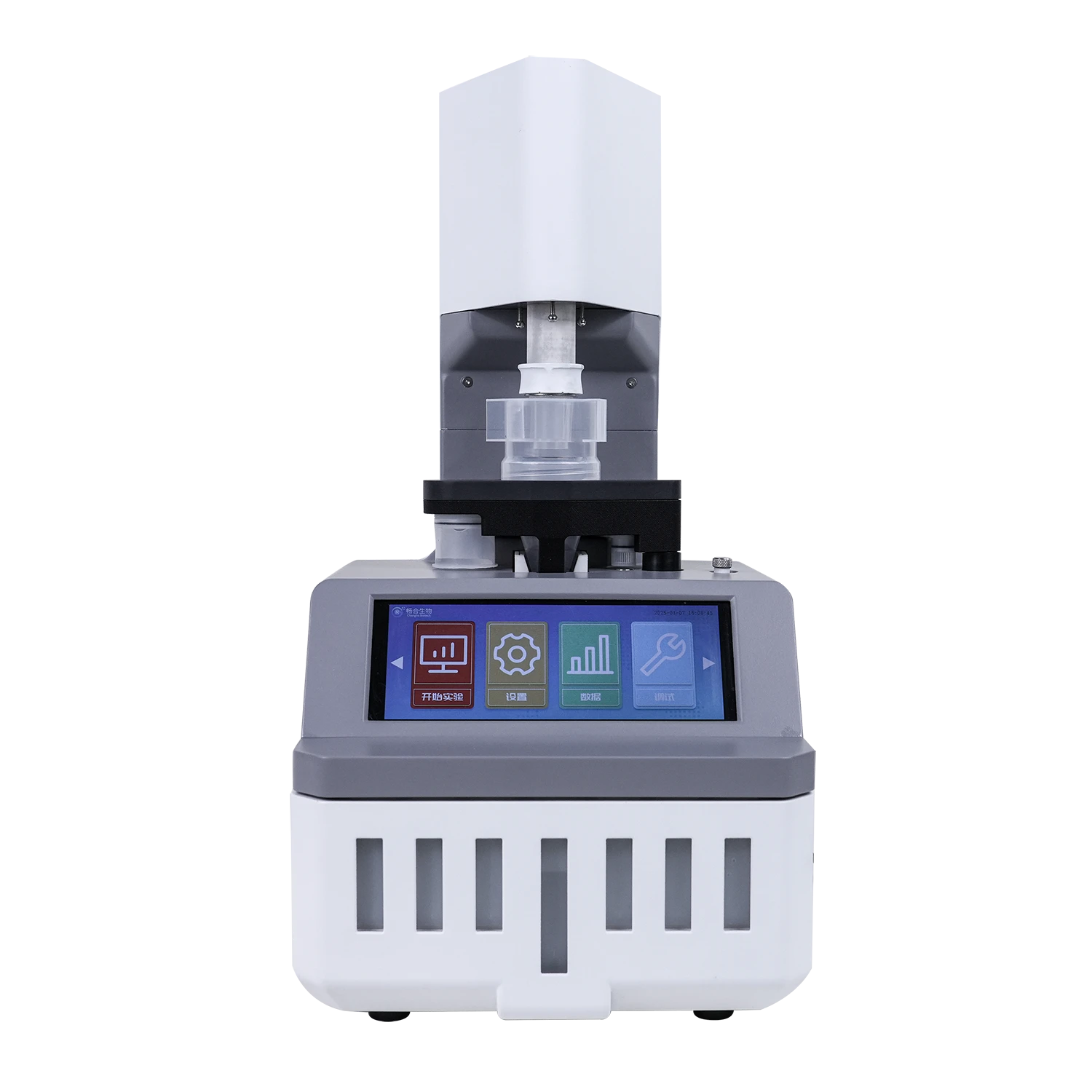
Accurate Bioaerosol Detection | Air & Mold Testing
Introducing the Continous Bioaerosol Sampler: Elevating Bioaerosol Detection Capabilities
In an era defined by increasing environmental awareness and public health concerns, the accurate and continuous monitoring of airborne biological particles – bioaerosols – has become paramount. From healthcare facilities to industrial cleanrooms, and from agricultural settings to urban environments, understanding the composition and concentration of bioaerosols is critical for mitigating risks associated with pathogens, allergens, and toxins. Our Continous Bioaerosol Sampler, available at https://www.bioaerosolsampler.com/continous-bioaerosol-sampler.html, represents a significant leap forward in this crucial field, offering unparalleled precision and reliability in bioaerosol detection.
This comprehensive guide delves into the world of bioaerosol monitoring, exploring industry trends, cutting-edge technologies, and the specific advantages our product brings to diverse application scenarios. We aim to provide an in-depth understanding for professionals engaged in environmental health and safety, industrial hygiene, pharmaceutical manufacturing, and public health, showcasing why continuous, real-time bioaerosol detection is no longer a luxury but a necessity.
Industry Trends and the Growing Need for Advanced Bioaerosol Detection
The landscape of environmental and public health is continuously evolving, driven by several macro trends that underscore the urgent need for sophisticated bioaerosol detection systems. Global climate change, leading to altered weather patterns and increased humidity, contributes to the proliferation and dispersal of fungal spores and bacteria. Concurrently, rapid urbanization and industrialization concentrate human populations and industrial activities, increasing exposure risks in enclosed and shared spaces.
Furthermore, the lessons learned from recent global pandemics have profoundly reshaped our understanding of airborne disease transmission. This has catalyzed unprecedented investment and innovation in air quality monitoring, specifically for biological contaminants. The public and private sectors are now acutely aware of the economic and health repercussions of inadequate air quality, leading to stricter regulations and a higher demand for proactive monitoring solutions like those for bioaerosol detection.
Traditional methods for `air and mold testing` or `air sample mold test` often involve manual collection followed by lab analysis, which can be time-consuming and provide only a snapshot in time. The emergence of real-time, continuous monitoring technologies addresses these limitations, offering immediate insights into airborne microbial loads. This shift is crucial for applications requiring rapid response, such as infection control in hospitals, early warning systems for `toxic mold detection` in buildings, or process control in sterile manufacturing environments.
Technical Parameters and Core Functionality of Bioaerosol Detection Systems
At the heart of effective bioaerosol detection lies a combination of sophisticated technical parameters and robust sampling methodologies. Our Continous Bioaerosol Sampler utilizes advanced impaction technology combined with real-time optical detection to provide comprehensive data. Key parameters include:
- Sampling Rate: Measured in liters per minute (LPM) or cubic meters per hour (m³/h), this defines the volume of air processed. A higher sampling rate allows for the detection of lower concentrations of bioaerosols and provides a more representative sample of the ambient air. Our sampler features an adjustable flow rate, optimizing it for various environments and target concentrations.
- Particle Size Range: Bioaerosols vary significantly in size, from sub-micron viruses to larger pollen grains or fungal spores (typically 0.1 to 100 micrometers). Our system is designed to efficiently capture and analyze particles within the most relevant respirable range, often focusing on PM2.5 and PM10, crucial for human health impact assessments.
- Detection Limit (Sensitivity): The minimum concentration of a specific bioaerosol that the system can reliably detect. For pathogens, this needs to be exceptionally low to prevent outbreaks. Our technology achieves high sensitivity through optimized collection and detection principles, minimizing false negatives.
- Selectivity: The ability to differentiate between different types of bioaerosols (e.g., bacteria vs. fungi, or specific species). While broad-spectrum detection is useful for general monitoring, advanced systems can incorporate specific assays or spectroscopic analysis for targeted identification.
- Continuous vs. Batch Sampling: Traditional methods are batch-based, offering periodic data. Our sampler provides continuous, real-time data streams, essential for tracking dynamic changes in bioaerosol concentrations and identifying transient events.
- Viable vs. Non-viable Particle Detection: Some systems detect total particles, while others specifically identify viable (living) microorganisms through techniques like adenosine triphosphate (ATP) detection or culturing. Our system integrates both optical particle counting for total bioaerosol load and the potential for subsequent viability analysis.
Typical Bioaerosol Detection Parameter Comparison
To illustrate the advantages, here’s a comparison of common parameters found in various bioaerosol detection systems, highlighting where our Continous Bioaerosol Sampler excels:
| Parameter | Traditional Impactor (e.g., Andersen Sampler) | Real-time Optical Particle Counter | Continous Bioaerosol Sampler (Our Product) |
|---|---|---|---|
| Sampling Method | Impaction onto agar plates (batch) | Light scattering (continuous) | Advanced Wet-Wall Cyclonic Impaction + Optical Detection (continuous) |
| Data Output | CFU/m³ (after 24-48h incubation) | Particles/m³, size distribution (real-time) | Particles/m³, size distribution, potential for rapid molecular analysis (real-time) |
| Time Resolution | Low (hours/days per sample) | High (seconds/minutes) | Very High (seconds/minutes) |
| Particle Size Range | ~0.6 - 10 µm (dependent on stage) | ~0.3 - 25 µm (typical) | 0.5 - 100 µm (optimized for bioaerosols) |
| Detection Type | Viable (culturable) | Total (viable & non-viable) | Total (Viable & Non-viable), supports subsequent viability assessment |
| Consumables | Agar plates | Minimal (filter for calibration) | Collection fluid, minimal filters |
| Automation Level | Manual setup & lab analysis | Automated sampling & data logging | Fully Automated, Remote Monitoring Capable |
| Cost of Operation | Moderate (labor, lab fees) | Low (minimal consumables) | Low (efficient collection, reduced lab fees) |
Application Scenarios of Advanced Bioaerosol Detection
The versatility of advanced bioaerosol detection systems like our Continous Bioaerosol Sampler extends across a multitude of sectors, each benefiting from enhanced air quality monitoring:
- Healthcare Facilities & Hospitals: Critical for infection control in operating rooms, isolation wards, and patient recovery areas. Continuous monitoring helps detect airborne pathogens (e.g., SARS-CoV-2, influenza, MRSA) to prevent nosocomial infections and ensure patient safety.
- Pharmaceutical & Biotechnology Industries: Essential for maintaining sterile environments in cleanrooms during drug manufacturing, vaccine production, and cell culture. Compliance with GMP (Good Manufacturing Practice) and ISO 14644 standards heavily relies on precise `air sample mold test` and bacterial monitoring.
- Food & Beverage Processing: Preventing contamination by mold spores, yeasts, and bacteria is vital for product safety and shelf life. Our system can monitor processing areas, packaging lines, and storage facilities to preempt spoilage and ensure regulatory compliance.
- Environmental Monitoring & Public Spaces: Deployed in urban centers, public transport hubs, and critical infrastructure to monitor airborne biological threats, allergens (pollen), and pollutants. This contributes to public health advisories and emergency preparedness.
- Industrial Cleanrooms & Microelectronics: In sensitive manufacturing processes where even microscopic biological particles can cause defects, rigorous `air and mold testing` and continuous bioaerosol detection are indispensable for quality control.
- Agriculture & Livestock Facilities: Monitoring airborne pathogens and allergens to protect animal health and prevent the spread of diseases within large-scale operations.
- HVAC & Building Management: Proactive detection of `toxic mold detection` and bacterial growth within ventilation systems can prevent sick building syndrome and improve indoor air quality for occupants. This is crucial for schools, offices, and residential complexes.
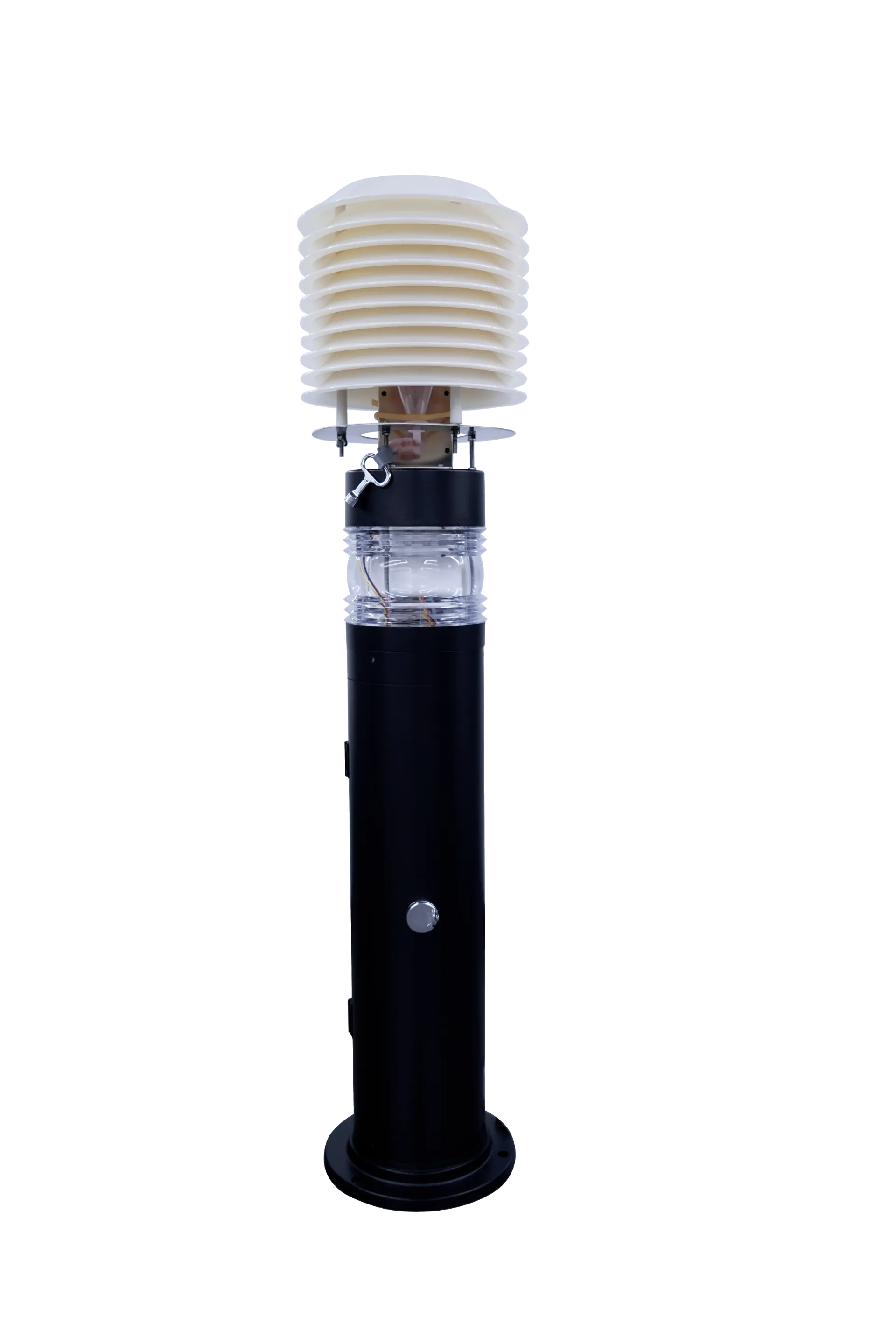
Fig 1: Continuous bioaerosol monitoring in an industrial cleanroom setting.
Technical Advantages of the Continous Bioaerosol Sampler
Our Continous Bioaerosol Sampler is engineered to surpass the limitations of traditional bioaerosol monitoring methods, offering a suite of technical advantages:
- Real-time Data Acquisition: Unlike methods requiring lengthy incubation, our system provides immediate feedback on bioaerosol levels, enabling rapid response to contamination events or spikes in microbial activity. This continuous insight is invaluable for proactive risk management.
- High Collection Efficiency: Utilizing a unique wet-wall cyclonic impaction design, the sampler achieves superior collection efficiency across a broad range of particle sizes, minimizing particle bounce and ensuring virtually all collected biological particles are viable and retrievable for subsequent analysis. This is a critical factor for accurate `air sample mold test` results.
- Minimized Sample Degradation: Bioaerosols are collected into a liquid medium, preserving their viability and integrity far better than traditional dry impaction methods. This ensures that downstream molecular analysis (e.g., PCR, qPCR) or culturing provides accurate results, which is particularly important for `toxic mold detection`.
- Automated & Low Maintenance: Designed for continuous operation with minimal human intervention. Features like automated fluid replenishment and self-cleaning cycles reduce operational costs and labor, making it ideal for long-term deployments.
- Robust Construction & Durability: Built with industrial-grade materials resistant to corrosion and wear, ensuring a long operational lifespan even in harsh environments. This includes specialized alloys and polymers for fluid handling sections.
- Remote Monitoring & Integration: Equipped with advanced communication protocols (Modbus, Ethernet/IP, MQTT) for seamless integration into existing Building Management Systems (BMS), SCADA systems, or cloud-based platforms. This allows for remote data access, alerts, and system diagnostics, enhancing efficiency in `air and mold testing` campaigns.
- Versatile Output Options: Beyond real-time particle counting, the collected liquid sample can be easily retrieved for further laboratory analysis, including culturing for Colony Forming Units (CFU), PCR for specific pathogen DNA/RNA, or even microscopy for morphological identification.
- Energy Efficiency: Optimized airflow dynamics and efficient pump mechanisms contribute to lower power consumption compared to older, less efficient designs, translating to reduced operating costs (energy saving) over the product's lifespan.
Manufacturing Process and Quality Assurance of the Continous Bioaerosol Sampler
The superior performance and reliability of the Continous Bioaerosol Sampler are a direct result of our meticulous manufacturing process, which integrates advanced engineering with stringent quality control. Our commitment to excellence ensures that every unit meets the highest industry standards, from material selection to final calibration.
Manufacturing Process Flow:
- Product Material Example: High-grade stainless steel (e.g., SUS316L) for impaction chambers and fluid reservoirs, known for its excellent anti-corrosion properties (crucial for ensuring a long use-life in potentially corrosive environments like petrochemical or wastewater treatment plants).
- Specialized engineering plastics (e.g., PEEK, PTFE) for seals and critical flow paths, chosen for their chemical resistance, low friction, and non-leaching properties.
- Precision-machined aluminum alloys for structural components, offering a balance of strength and light weight.
- CNC Machining: Core impaction cones and nozzles are produced via multi-axis CNC machining to achieve micron-level tolerances, critical for consistent airflow and particle collection efficiency. This ensures precise geometry for optimal aerodynamic capture.
- Laser Cutting/Bending: Enclosure panels and mounting brackets are precisely cut and formed using automated laser cutting and bending machines, ensuring tight fitment and structural integrity.
- Casting/Forging (for specialized parts): Certain robust structural elements or highly customized fluid pathways may employ precision casting or forging techniques, followed by secondary machining, to achieve superior mechanical properties and intricate shapes. For instance, a robust base manifold might be forged for exceptional durability.
- Flow Rate Calibration: Calibrated using certified flow standards (e.g., traceable to NIST) to ensure accurate air volume measurement.
- Particle Collection Efficiency Testing: Verified against known particle aerosols (e.g., polystyrene latex spheres) in a controlled chamber to confirm collection efficiency across the specified particle size range, adhering to internal test protocols that often exceed industry norms.
- Leak Detection: All fluidic and air pathways are leak-tested under pressure to ensure system integrity and prevent environmental contamination or sample loss.
- Operational Lifetime Testing: Select units undergo accelerated life testing to simulate years of operation, validating mechanical robustness and component longevity. The expected use life for our Continous Bioaerosol Sampler is typically 10+ years with routine maintenance, underscoring its robust design.
Detection Standards & Compliance: Our manufacturing processes and final products adhere to international standards such as ISO 14644 for cleanroom compatibility, ANSI/ASHRAE Standard 52.2 for air filter performance, and relevant CE/FCC directives for electronic safety and electromagnetic compatibility. This commitment to compliance reinforces the trustworthiness and global applicability of our Continous Bioaerosol Sampler.
Applicable Industries and Advantages: The robust construction, especially the use of high-grade stainless steel and advanced polymers, makes the Continous Bioaerosol Sampler highly suitable for harsh environments encountered in petrochemical, metallurgy, and water treatment (give-drainage) industries. Its corrosion resistance ensures longevity, while features like energy efficiency and low maintenance contribute to reduced operational costs and increased uptime, directly benefiting these critical sectors by providing reliable bioaerosol detection.
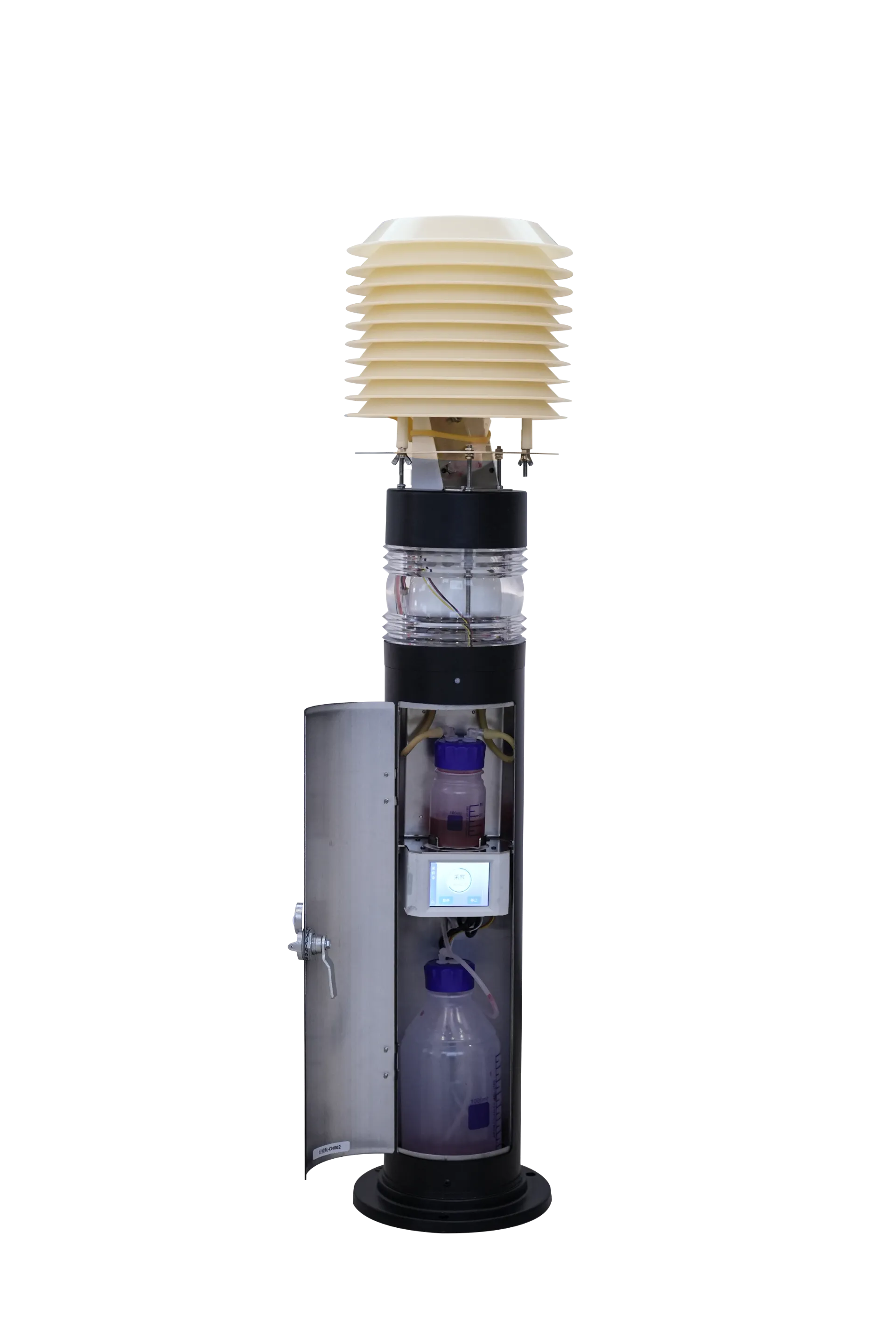
Fig 2: Detailed view of the Continous Bioaerosol Sampler in operation, highlighting its sleek design and user interface.
Manufacturer Comparison: Why Choose Our Continous Bioaerosol Sampler
When evaluating bioaerosol detection solutions, customers face a spectrum of choices, from traditional impaction devices to advanced real-time monitors. Our Continous Bioaerosol Sampler distinguishes itself through a unique combination of innovative technology, robust construction, and comprehensive support. Here's a brief comparison:
| Feature | Traditional Samplers (e.g., Agar Plate Impactor) | Competitor Real-time Optical Counters | Continous Bioaerosol Sampler (Our Product) |
|---|---|---|---|
| Data Acquisition | Batch, delayed (24-72 hours) | Real-time particle count | Real-time particle count + Collectable liquid sample for lab analysis |
| Viability Preservation | Good for culturable; susceptible to desiccation for others | Poor (non-viable detection) | Excellent (collection in fluid medium) |
| Particle Bounce | Significant issue, especially for dry impaction | Not applicable (optical) | Virtually eliminated by wet-wall design |
| Maintenance Needs | High (manual plate changes, lab processing) | Moderate (sensor cleaning, calibration) | Low (automated fluid management, self-cleaning) |
| Integration Capability | Limited/None | Basic (RS232/USB) | Advanced (Modbus, Ethernet/IP, MQTT, Cloud API) |
| Suitability for Harsh Environments | Low (sensitive to temperature/humidity) | Moderate (some ruggedized options) | High (IP-rated, corrosion-resistant materials, robust design) |
| Customer Support & Warranty | Standard | Varies | Premium (2-year standard warranty, extended options, dedicated support) |
| Total Cost of Ownership (TCO) | High (consumables, labor, lab fees) | Moderate (initial cost, sensor replacement) | Lower TCO (reduced consumables, automation, durability) |
Our company boasts over 15 years of dedicated service in environmental monitoring technology, with a robust portfolio of successful installations globally. We are proud to be ISO 9001:2015 certified, reflecting our unwavering commitment to quality management. Our collaborative partnerships with leading research institutions and environmental agencies ensure our products remain at the forefront of `air and mold testing` and bioaerosol detection innovation.
Customized Solutions and Tailored Bioaerosol Detection Approaches
Recognizing that every application has unique requirements, we offer customized solutions for our Continous Bioaerosol Sampler. Our team of expert engineers works closely with clients to understand specific environmental challenges, regulatory compliance needs, and integration preferences. This consultative approach ensures that the deployed bioaerosol detection system is perfectly optimized for peak performance and maximum value.
Customization options include:
- Flow Rate Configuration: Tailoring sampling rates to match the specific air volumes and detection limits required for your environment, from low-flow personal monitoring to high-volume area monitoring.
- Connectivity Options: Providing specific communication modules (e.g., LoRaWAN for long-range wireless, 5G for high-speed data) to integrate seamlessly with existing IT infrastructure or remote monitoring networks.
- Environmental Hardening: Offering enhanced IP ratings (e.g., IP67) for deployment in extremely dusty, humid, or corrosive industrial environments, ensuring uninterrupted performance. This is crucial for applications like `toxic mold detection` in challenging structural environments.
- Integrated Alert Systems: Developing customized alert thresholds and notification protocols (SMS, email, visual alarms) tailored to your operational response plans for `air sample mold test` results or other bioaerosol events.
- Software Integration & Dashboard Development: Customizing data visualization dashboards and analytical software to provide insights relevant to your specific operational key performance indicators (KPIs), facilitating informed decision-making.
- Specialized Collection Media: While our standard fluid is broadly effective, we can advise on or develop specific collection media to enhance the recovery or preservation of particular types of microorganisms.
Our service doesn't end with delivery. We offer comprehensive post-sales support, including installation assistance, calibration services, preventive maintenance programs, and software updates, ensuring the long-term reliability and accuracy of your bioaerosol detection system. We understand that a seamless user experience and minimal downtime are crucial for mission-critical applications.
Application Case Studies: Real-World Impact of Continous Bioaerosol Detection
The practical benefits of our Continous Bioaerosol Sampler are best illustrated through real-world applications where it has provided invaluable insights and enabled proactive measures.
Case Study 1: Pharmaceutical Cleanroom Monitoring
A leading pharmaceutical manufacturer faced challenges in maintaining ISO Class 7 cleanroom standards during critical processing phases. Traditional batch sampling methods for `air and mold testing` provided delayed results, leading to potential contamination risks and costly production halts. By deploying our Continous Bioaerosol Sampler at key points within their aseptic filling lines, the company gained real-time insight into airborne particulate and biological loads. The system immediately flagged a transient increase in bioaerosol counts during a specific operational step, which was quickly traced to a malfunctioning HEPA filter. Rapid detection prevented batch contamination, saving hundreds of thousands of dollars in potential product loss and ensuring uninterrupted compliance with stringent regulatory requirements.
Case Study 2: Hospital Infection Control
In a large urban hospital, concerns about airborne pathogen transmission in a high-traffic emergency department led to the implementation of our Continous Bioaerosol Sampler. The system was integrated with the hospital's HVAC control system. Over a period of several months, the system accurately detected spikes in airborne microbial concentrations coinciding with patient admissions for respiratory illnesses. This real-time data allowed facility managers to adjust air filtration rates, increase ventilation, and deploy portable air purifiers proactively, significantly reducing the environmental bioburden and contributing to a measurable decrease in healthcare-associated infections within that zone. This proactive `bioaerosol detection` capability enhanced patient and staff safety.
Case Study 3: Building Remediation for `Toxic Mold Detection`
Following water damage in a large commercial office building, concerns arose about potential `toxic mold detection` and other fungal growth. Traditional `air sample mold test` methods indicated elevated spore counts but lacked the continuous data needed to verify remediation effectiveness in real-time. Our Continous Bioaerosol Sampler was deployed post-remediation to provide continuous monitoring. The system confirmed the successful reduction of airborne mold spores to safe levels immediately after the cleanup and continued to monitor for any resurgence, providing concrete data to building occupants and insurance providers, assuring them of the building's renewed air quality.
Professional FAQ on Bioaerosol Detection and Our Sampler
A: The primary advantage is real-time insight. Traditional batch sampling provides only a snapshot of air quality at a specific moment, with a significant delay for laboratory analysis. Continuous detection allows for immediate identification of bioaerosol spikes, enabling rapid response to contamination events, tracking dynamic changes in air quality, and preventing prolonged exposure or spread of contaminants.
A: Our sampler utilizes a wet-wall cyclonic impaction mechanism, collecting bioaerosols directly into a liquid medium. This prevents desiccation and physical damage that can occur with dry impaction methods, thus preserving the viability and integrity of collected microorganisms. This is crucial for subsequent culturing or molecular analysis (e.g., PCR) for accurate `air sample mold test` results or pathogen identification.
A: Key components are made from high-grade stainless steel (e.g., SUS316L) for impaction chambers and fluid reservoirs due to its excellent corrosion resistance and biological inertness. Specialized engineering plastics like PEEK and PTFE are used for seals and fluid pathways for their chemical resistance and low friction. Aluminum alloys are used for structural components for strength and weight balance. These materials ensure longevity, minimize contamination, and allow the sampler to operate effectively even in harsh industrial environments (like petrochemical or metallurgy sectors) with superior anti-corrosion properties.
A: Installation typically requires a stable, level surface for mounting, access to a standard electrical outlet (e.g., 100-240V AC), and a network connection (Ethernet or Wi-Fi) if remote monitoring is desired. Depending on the environment, a stable ambient temperature and humidity range might be specified to ensure optimal performance. Our technical team provides detailed installation guidelines and can offer on-site support if required, ensuring compliance with local electrical and safety codes.
A: The sampler's optical detection system primarily counts total particles (both viable and non-viable) within a specified size range in real-time. However, because it collects samples into a liquid, these collected samples can then be subjected to laboratory analysis (e.g., culturing for CFU, ATP tests, or molecular methods) to specifically determine the concentration of viable microorganisms. This dual capability offers comprehensive bioaerosol detection.
A: The sampler is designed for low maintenance. Routine tasks typically involve periodic replenishment of the collection fluid and occasional cleaning of external surfaces. Sensor calibration is recommended annually. With proper maintenance, the Continous Bioaerosol Sampler has an expected operational lifespan of 10+ years, offering a significant return on investment due to its robust manufacturing (including CNC machining and high-quality materials) and durable design.
A: For `toxic mold detection`, the Continous Bioaerosol Sampler provides real-time monitoring of airborne fungal spores, identifying periods of elevated mold concentrations. The collected liquid samples can then be rapidly analyzed in a lab using qPCR or microscopy to identify specific toxigenic mold species (e.g., Stachybotrys, Aspergillus, Penicillium). This combination of continuous monitoring and specific lab identification offers a powerful tool for proactive mold management and remediation verification, going beyond simple `air and mold testing` to pinpoint hazardous species.
Commitment to Trustworthiness and Customer Support
Our commitment extends beyond providing cutting-edge bioaerosol detection technology. We believe in building lasting relationships through unparalleled customer support and transparency.
- Quality Assurance & Certifications: Our manufacturing facilities are ISO 9001:2015 certified, ensuring consistent quality in every product. Our products comply with relevant international standards such as CE, FCC, and RoHS, demonstrating our adherence to safety, environmental, and performance regulations.
- Warranty & Service: We offer a comprehensive 2-year warranty on the Continous Bioaerosol Sampler, covering defects in materials and workmanship. Extended warranty options and service contracts are available to ensure peace of mind and maximize operational uptime.
- Delivery Cycle: Typical delivery cycles range from 4-6 weeks from order confirmation, depending on customization requirements and order volume. We maintain efficient supply chain management to minimize lead times without compromising quality. Expedited options are available upon request.
- Customer Support: Our dedicated technical support team is available via phone, email, and live chat. We provide comprehensive training materials, troubleshooting guides, and remote diagnostic services to assist with any operational queries or technical challenges. Our global network of certified service partners ensures timely on-site support when needed.
- Testimonials & Case Studies: We regularly update our website with anonymized customer feedback, success stories, and detailed case studies, showcasing the real-world impact of our bioaerosol detection solutions across diverse industries.
References and Further Reading:
For more in-depth information on bioaerosol science, detection methodologies, and health impacts, we recommend consulting the following resources:
- World Health Organization (WHO) Guidelines on Indoor Air Quality: Dampness and Mould.
- Applied and Environmental Microbiology Journal - American Society for Microbiology.
- ISO 14644 Series for Cleanrooms and Associated Controlled Environments.
- Journal of Aerosol Science - Peer-reviewed academic journal on aerosol research.
- U.S. Environmental Protection Agency (EPA) - Mold Remediation in Schools and Commercial Buildings.
These resources offer valuable insights into the scientific foundations and regulatory frameworks surrounding bioaerosol detection and air quality management.
-
Precision Bioaerosol Detection & Air Quality TestingNewsAug.07,2025
-
Accurate Air Sample Mold Test | Mould Detector DeviceNewsAug.06,2025
-
Accurate Air Sample Mold Test | AI-Powered AnalysisNewsAug.04,2025
-
AI Air Sampling Bacteria Detection Kit | Accurate & FastNewsAug.01,2025
-
High-Accuracy PCR Panel for Cats – Fast Diagnosis & Reliable ResultsNewsJul.30,2025

